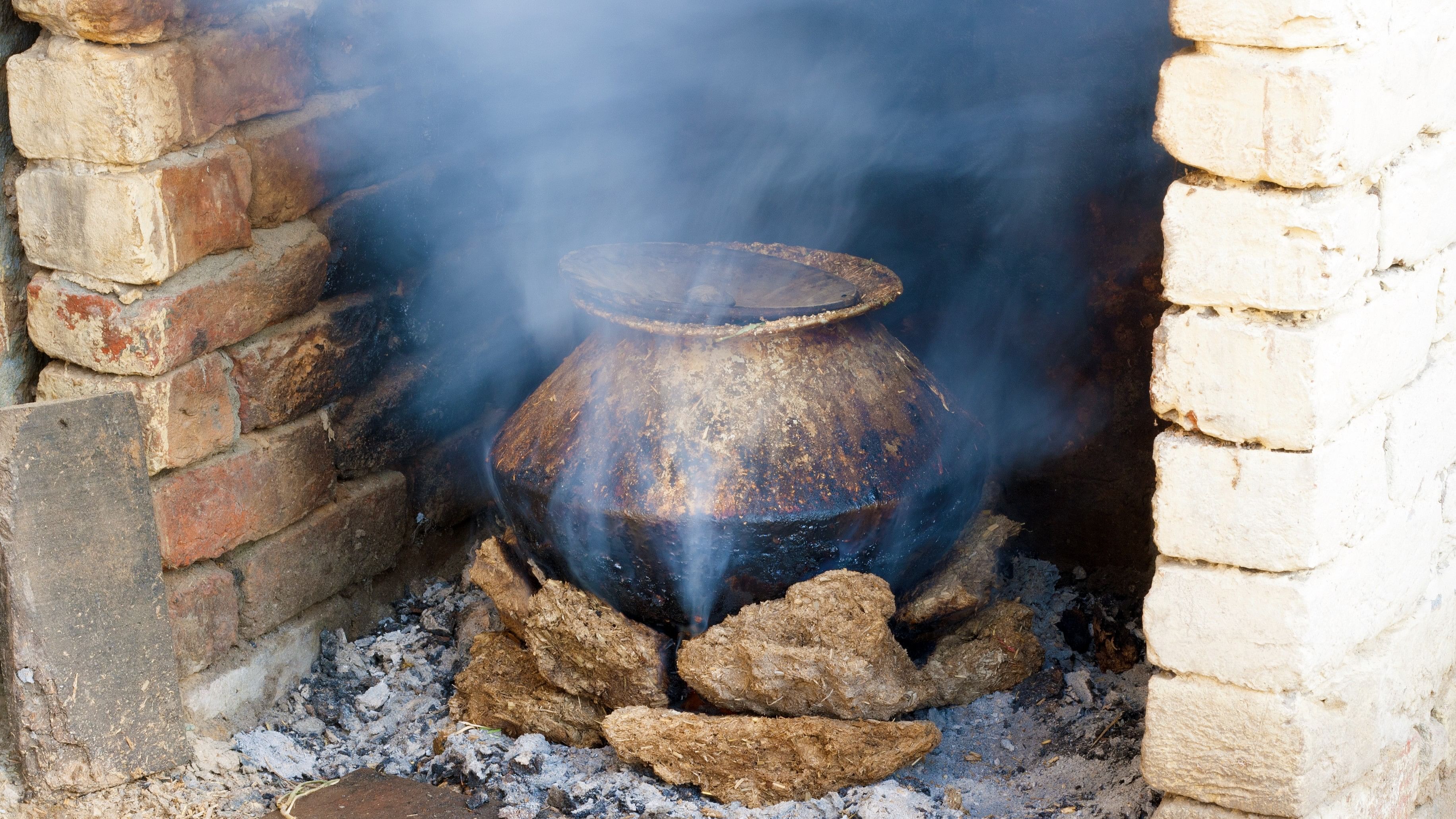
Approximately three million people globally (including 0.6 million people in India) die prematurely every year because of indoor air pollution. These deaths are mostly caused by wood-based cooking, the report said, citing research conducted in the past.
Credit: iStock Photo
New Delhi: Forty-one percent of the Indian population still uses wood, cow dung or other biomass as cooking fuel and cumulatively emits around 340 million tonnes of carbon dioxide into the environment every year, which is about 13 per cent of India's greenhouse gas emissions, according to a new report.
The report 'India's Transition to E-cooking' by the independent think tank Centre for Science and Environment also said that the Pradhan Mantri Ujjwala Yojana led to a rapid expansion in access to liquified petroleum gas (LPG) in India, but it has 'not guaranteed a sustained transition to clean cooking in households' that benefited from the scheme.
Around a third of the world’s population – 2.4 billion people globally (including 500 million people in India) – still lack access to clean cooking solutions. This causes untold damage to the economy, public health and the environment.
Approximately three million people globally (including 0.6 million people in India) die prematurely every year because of indoor air pollution. These deaths are mostly caused by wood-based cooking, the report said, citing research conducted in the past.
Although the Ministry of Petroleum and Natural Gas (MOPNG) claims that the country’s household LPG 'coverage' stands at 99.8 per cent, the National Family Health Survey conducted in 2019–21 (NFHS-5) shows that 41 per cent of the population still cooks on biomass, it said.
"CSE’s own calculations have found that this 41 per cent cumulatively emits -- when it cooks on wood, cow dung or other biomass — around 340 million tonnes of CO2 (carbon dioxide) into the environment every year, which is about 13 per cent of India’s national GHG emissions," the report said.
A review of India’s last Biennial Update Report (BUR3) to the United Nations Framework Convention on Climate Change shows this particular sectoral emission is not counted as part of national emissions.
Through PMUY launched in May 2016, more than 100 million households in India received LPG cylinders by the end of March 2023.
However, over 50 per cent of the households that received new LPG cylinders under PMUY did not choose to refill it even once, the CSE said.
"This was due to high costs of refill, cultural or behavioural beliefs, and a lack of significant LPG cylinder distribution networks where the beneficiaries lived," the report said.
As of March 2023, the average cost for a refill of an LPG cylinder (14.2 kg) was approximately Rs 1,100 across India. The average Indian household requires eight such cylinders solely for cooking in a year. That translates to approximately Rs 8,800 spent on cooking fuel alone per year.
As per the NITI Aayog’s Tenth Five-Year Plan, the average annual income of a Below Poverty Line (BPL) family is capped at Rs 27,000, which means an average BPL family (who are the primary beneficiaries of the PMUY scheme) have to spend one-third of their annual income on cooking fuel alone, the CSE said.